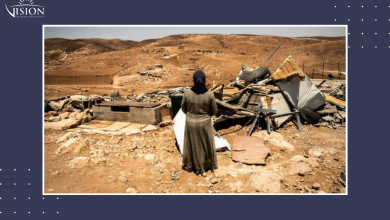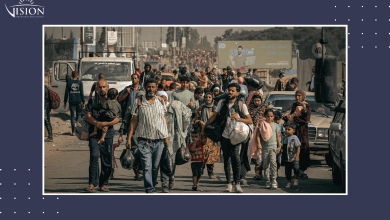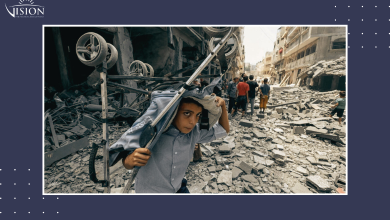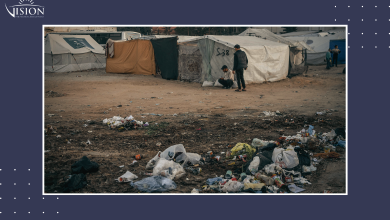Hebrew Media and Manipulation of Public Opinion
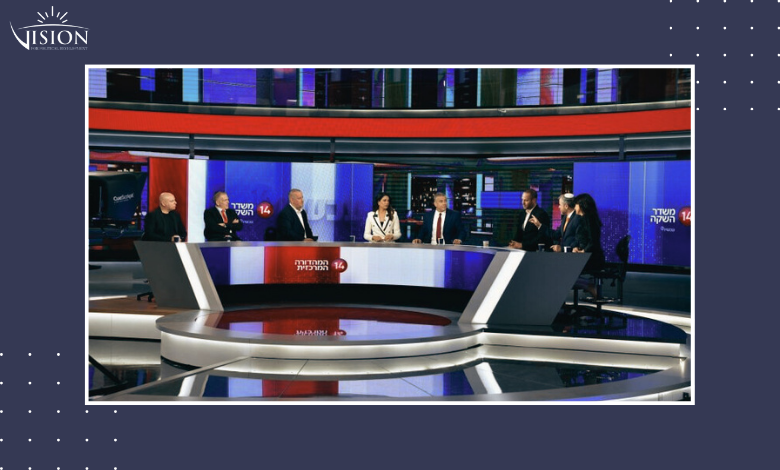
Since the launch of Operation ‘Toofan Al-Aqsa’ on October 7, 2023, and the subsequent genocide in the Gaza Strip, along with the opening of support fronts and their developments leading up to the war with Iran, there has been a noticeable increase in Arab engagement with Hebrew media, relying on it to obtain information and understand the course of events.
It is worth noting that this phenomenon is historical and not exclusive to the current escalation of the conflict, although it has seen unprecedented spikes during this specific time period. However, this trend has created several issues in understanding the Israeli political landscape and society, and the resulting implications for the developments and shifts in the conflict—culminating in the attack on Iran, which was the outcome of a strategic deception operation, in which the Hebrew media itself played a part.
Therefore, there is an urgent need to reconsider the mechanisms of engaging with and responding to Hebrew media, and to regulate the process of following and relying on it—limiting it to the extent of absolute necessity. This also applies to Western media, especially those outlets that cite ‘informed private sources’ or a ‘high-ranking official,’ which typically refer to Israeli officials.
This need stems from the understanding that Hebrew media is an integral part of the Israeli apparatus and plays multiple roles before, during, and after military confrontations. Part of this belief arises from the fact that Hebrew media is heavily subject to military censorship, which controls every detail and becomes even more intense during times of war and conflict.
It also stems from the fact that Israeli society sees itself as a soldier at war, stationed in a fortress that it must protect and prevent from falling. Therefore, all components of society rally behind the state in times of war, which, in the case of Israel, is the norm rather than the exception in Israel. Even when war is not present as a physical event on ground, the sense of its threat and possibility are enough to perpetuate its effects.
The motivation behind this proposition is the strategic deception operation that targeted Iran, resulting in it being subjected to highly sensitive military strikes on June 13. While this deception operation was not limited to Hebrew media—including Western media that often relays statements from so-called ‘informed sources’ which are, in reality, messages from Israeli officials seeking to send specific signals—it involved a broader set of mechanisms and tools, the most prominent of which was the negotiation process itself. Nonetheless, Hebrew media occupies a leading position in this deception strategy.
What is meant by ‘Hebrew media’ is not merely the technical aspect of news coverage, event broadcasting, and analysis, but rather its function as the approved primary tool for observing Israeli society and understanding its internal developments, debates, and political and social conflicts. While recognizing the necessity of Hebrew media for aforementioned purposes, it must also be taken into account that its function and role is not limited to that of a neutral transmitter—as media is generally perceived—but extends to actively shaping, constructing, and even distorting the recipient’s understanding.
Given that the societies of the region, both Arab and non-Arab, have become exposed to Hebrew media as a result of its heavy coverage and extensive reproduction in Arab media outlets, they have become prime targets of the manipulation and misinformation campaigns propagated by that media.
In truth, the process of deception and misinformation may not always be intentional in and of itself, since Hebrew media is generally directed at the Israeli public. However, the way Arab audiences engage with it removes it from its original context and places it into a different light—not merely to understand Israeli affairs, but to interpret regional dynamics as a whole. In doing so, Hebrew media has started to reshape Arab public understanding of regional events.
Since the outbreak of the genocide and as its developments unfolded, the deceptive operations executed by the Israeli occupation increased—often using the same methods. Overall, Hebrew media played a prominent role in generating repeated instances of deception and perception management. While other contributing factors accompanied this process and helped construct the broader deception environment, the role of the media was central. What made its influence more effective and easier was the intense Arab consumption and tracking of what was being broadcast in Hebrew media.
This is what we aim to clarify in the following discussion, with the initial premise being that the ‘Toofan Al-Aqsa’ operation was, at least in part, triggered by a misreading of Israel’s internal crisis—its perceived weakness, military service refusals, air force pilots’ rebellion, and political divisions, all stemming from Netanyahu’s coalition efforts to push through controversial ‘judicial reforms’.
Prior to the resumption of the genocidal onslaught in the Gaza Strip on March 18, 2025, there was a lot of talk in the Hebrew media about the weakness and exhaustion of the Israeli army; how it’s resources were depleting, how there weren’t enough soldiers, how the reserves were complaining, and how soldiers were refusing to return to the battlefield. However, the question that arose at the time was: how can media that is under strict military censorship down to its core — where nothing is said without the occupation’s approval, even on platforms like Telegram — speak about matters considered military secrets for a state at war?
This goes against basic logic. If the weakness is real, then talking about it in detail will tempt enemies and opponents to either attack or take a harder line in negotiations, or to feel confident that things are calming down, because a weak and tired army will not go to war!
However, the occupation returned to war on the Gaza Strip, amidst all the talk about the army’s weakness and exhaustion—a discourse that did not subside but instead escalated over time. Naturally, there was an element of deception involved, to which several factors contributed: the image portrayed by the Hebrew media, the rounds of negotiations under the auspices of the United States, the proposals of the U.S. Special Envoy to the Middle East, Steve Witkoff, as well as Trump’s ambitions to achieve peace and his contradictory statements.
When the occupation resumed its aggression, it succeeded in assassinating a number of resistance leaders and fighters in its opening strike, exploiting a general sense of reassurance and complacency, and the prevailing belief among Palestinian resistance factions that the war would not return. Yet at the same time, all indicators pointed to its resumption—especially as a significant number of the occupation’s military and political leaders had publicly stated so.
In retrospect, if we were to examine the case of Hezbollah in Lebanon, we would find that the Hebrew media also played a role in creating a long-term state of deception and misinformation around it—while the party itself also contributed to creating a state of deception for itself. Since 2011, Hezbollah had been hinting at the possibility of invading the Galilee, and later moved on to officially declaring this intention, announcing the ‘Radwan Force,’ and conducting manoeuvres simulating such a scenario.
On the other side, the Israelis—through their media, including statements from the political and military establishment as well as what the media conveyed about their remarks and plans—amplified this scenario and claimed that such an operation could not be prevented, and that it might not be limited to the Galilee but could extend to Haifa. Even the Chief of Staff at the time, Herzi Halevi, participated in this deception.
However, logic also dictates that a military plan of such gravity and importance by Hezbollah should have remained completely secret, with no details disclosed—neither explicitly nor implicitly—in order to preserve the element of surprise and catch the enemy off guard. Otherwise, the plan would fail, as the enemy would be inclined to prevent it and take all necessary precautions against it.
The result was that, over the years, the occupation forces prepared for this scenario—not only to prevent it, but also to attempt to eliminate Hezbollah altogether. Meanwhile, Hezbollah itself did not consider the possibility that the occupation had already prepared for this scenario and continued to believe what the Hebrew media propagated about the inevitability of this scenario and the impossibility of preventing it, even just days before the party became involved in the war.
Returning to the case of Iran, it is notable that the method of deception used against Iran was repeated almost identically—quite interestingly—three times in recent months. It is true that the media alone was not the sole factor in creating the state of strategic deception; rather, the United States played a central role in creating that deception through what can be described as ‘deceptive diplomacy’ pursued by the Trump administration.
The first case we referred to at the beginning is the resumption of war on the Gaza Strip, following rounds of negotiations and proposals primarily handled by the U.S. envoy Steve Witkoff, in addition to contradictory statements issued by Trump. The second case is the destruction of part of the Russian strategic bombers on June 1st of this year, in an intelligence operation whose details do not differ from the Mossad operation carried out inside Iran.
In Russia’s case, the destruction of part of one of the three components of its nuclear triad—which affects its nuclear deterrent capability and signals the possibility of similar future strikes—is not directly related to Ukraine, even though Ukraine was the declared executor of the operation. Rather, it is part of the American effort, for which the war was originally instigated, to neutralize Russia as a competitor to the United States in shaping the future world order.
Therefore, there was a deception campaign carried out against Russia, personally led by Trump, who shifted his rhetoric to attacking Ukraine, threatening to cut off support, and even publicly rebuking its president, Volodymyr Zelensky, and expelling him and his entourage from the White House in late February.
However, the United States, through the mediation of Steve Witkoff, once again brought Russia and Ukraine to the negotiating table in various rounds held in different locations, including Saudi Arabia and Turkey, driven by ‘Trump’s desire to achieve peace.’ Trump, for his part, continued to issue contradictory statements—at times praising Putin, and at other times threatening and attacking him.
The stalling of the negotiations—which was expected given Russia’s insistence on its demands, demands it is unlikely to abandon after nearly three years of war—provided a sufficient pretext for the Trump administration to authorize Ukraine to target Russia’s strategic bombers. It is noteworthy that the negotiations stalled, but did not collapse, and there was still talk of upcoming rounds.
The same scenario, with only a few days’ difference, occurred with Iran. It can be said that the details of the strike were almost identically repeated. Trump was issuing contradictory statements daily, and just as Trump had a blatant and ‘brazen’ public disagreement with Zelensky, a similar—though less intense—image was portrayed regarding a disagreement between Netanyahu and Trump. At this point, Trump’s disagreement with Netanyahu over an attack on Iran should have been measured against his disagreement with Zelensky, which was followed by the targeting of Russia’s strategic bombers.
Meanwhile, Witkoff was holding rounds of negotiations with Iran and presenting proposals that were naturally expected to be rejected by Iran. However, this did not imply the failure or collapse of the negotiations, but rather their continuation in search of a middle ground. Accordingly, a date was set for another round of talks. In the midst of all this came the opening strike on Iran—sudden and catastrophic in its consequences—on June 13 of this year.
In the case of Russia, there was naturally no role for the Hebrew media, but Western media played its part in portraying the rift between Trump and Zelensky, Trump’s demands for Ukraine to surrender, and the intense criticism directed at Trump by the American intellectual elite over his policies toward Ukraine. However, in the case of Iran, the Hebrew media—partnering with Western media—worked to construct an image that went beyond leaking snippets of Trump’s calls with Netanyahu and the former’s desire to avoid confrontation, even temporarily.
It also painted a broader picture of Israeli society and its politics: a government on the brink of paralysis and collapse, the Haredi rebellion against the conscription law and their declaration of support for dissolving the Knesset, accompanied by rhetoric about the recruitment crisis, the growing phenomenon of reserve soldiers refusing to serve, and the economic exhaustion afflicting society and the state. Within this constructed image, the logic of analysis would suggest that a state in such a dire position would be unlikely to engage in a major war with a country on the nuclear threshold.
But where does the flaw lie that blinds not only analysts and observers, but even state leaders and their security apparatuses? Perhaps the answer, specifically in the case of Israel, lies in the deep immersion in the Hebrew media. What is meant here is not simply the media as a channel for news transmission, but rather everything that comes out of Israel—whether in its media, research centers, international newspapers, officials’ statements, or reports on political disputes and societal divisions—which have become the main course served on the tables of Arab media outlets.
This state of immersion has led to a reshaping of public awareness and opinion, steering the Arab way of thinking and understanding events in a manner that is deeply entangled with the Israeli perspective and the narratives intended to be conveyed through the media. Hebrew media is directed media—nothing is published outside the framework of military censorship, which not only prohibits reporting on the occupation’s losses in wars and confrontations, as is commonly believed, but also controls the messaging, shaping perceptions about Israel’s state, its problems, priorities, and intentions.
The point here is not to view everything through the lens of conspiracy theory—even though its elements are present. The political crises Israel suffers from are real, and so are its other related issues. For instance, it would be unreasonable to claim that the hundreds of thousands protesting in Israeli streets are simply part of a ‘theatrical performance’, or to deny the very real crisis surrounding the conscription law and its repercussions on the government and the Israeli political scene.
However, these facts are only part of the broader picture—not the picture itself. The angle from which we view these developments turns them into the entire scene in our perception and awareness. And that is what leads to flawed and disastrous conclusions.
The problem lies in the fact that Arab media—unproductive and incapable of generating original news—feeds off what is produced by Hebrew media in particular, and by Western media in general, to the point that it has almost become merely a translation intermediary. Even when Arab media outlets are provided with authentic news directly from those involved, they still prioritize Hebrew reports and the debates taking place within Israeli media.
While the underlying causes of this dysfunctional situation are understandable—primarily the absence of democracy, freedom of information, expression, and thought in the Arab world, which forces us to seek information from other sources that operate within political systems fostering intellectual and informational freedom—the approach Arab media takes to Hebrew and Western sources is driven by wishful analysis. This is far removed from critical thinking, which should begin with doubt as its primary tool, especially considering our knowledge that Hebrew media operates under military censorship. This fact alone should compel any observer, reader, or analyst to subject all Hebrew media content to scrutiny and indirect interpretation.
As a result of this situation, the Israelis declare their objectives and upcoming actions quite openly—and, more alarmingly, they even announce their intention to use ‘deception’ in their next steps. Yet these statements are lost amid the noise of debates, analyses, and meta-analyses of Israeli analysis, and are pushed to the margins of the discourse, treated as idle talk in the flood of internal commentary and debates.
Naturally, Arab analysis and understanding of what appears in Hebrew media has remained captive to what we might call the ‘cornerstone’ of the current Arab perception of Israel—namely, ‘Netanyahu’s efforts to maintain his government and avoid prosecution.’ To such an extent that everything is now interpreted through this lens, and every move is explained from this perspective.
There is no need to refute this narrative—one that, incidentally, has also been planted in our consciousness by the Hebrew media—because doing so at this stage would be somewhat futile. What is important, however, is to recognize that the narrative built around Netanyahu, while it may hold some truth in explaining part of the picture, is actually one of the most effective tools aiding Israel in executing the strategic deception it currently employs against its enemies.
Netanyahu has capitalized on the image crafted around him—that he is solely concerned with preserving his government, that he is driven by personal interests, and that he is under the influence of his wife, Sara—to successfully carry out the deception that was practiced on Iran. Just before the initial strike, Netanyahu was preoccupied with his son’s wedding and embroiled in a struggle to keep his coalition together amid threats from Haredi parties to dissolve the Knesset and topple the government. These developments were perceived as his top priorities, not launching an attack on Iran—an impression that was naturally reinforced by his apparent disagreement with Trump over the issue.
In the end, the Arab understanding of Israel today remains captive to certain narratives. While these narratives may be accurate in explaining parts of the situation, they are insufficient for grasping the full picture. The Arab media’s deep immersion in Hebrew media has helped shape many of these narratives—significantly so.
As long as this situation persists, and Arab media continues to play the role of the ‘faithful translator’ of the Hebrew text—accompanied by the rise of amateur experts and analysts in Israeli affairs and the immediate translation of every trivial update—it will be increasingly difficult to break free from the stronghold of these narratives and to fundamentally reassess our understanding of Israel as an occupying entity and society.
NOTE: This text is adapted from original Arabic article.


